
NFTs flourish in many fields right from the music industry to real estate. Moreover, NFTs have all the chances to make a huge impact in the publishing sector, too. So, if you are a writer or working in the book publishing industry, you’d better find out how NFTs are going to shape the sector.
We tried to answer the most common question related to the NFTs for books. So, let’s begin...
Why Use NFTs for the Book?
NFTs for books retain both practical and creative significance. NFTs are digital collectibles. In other words, they are digital files with the ownership recorded in the blockchain which make them unique digital versions of items.
NFTs are different from the digital copies of books that you can buy online. While purchasing the ebook, you own it for as long as the online marketplace where you bought it, agrees to keep providing it. In this case, NFTs are similar to print book ownership where you own a unique copy within a series of different similar copies. For this reason, pirating an NFT book is difficult while the author’s copyright is protected.
Another great thing in using NFTs for publishing is the implementation of smart contracts. Usually, the process of publishing and selling a book includes various parties who earn a percentage of each sale. Depending on the publisher these are paid out several times a year. However, smart contracts eliminate this mechanism. Instead, the contractual payouts happen automatically and immediately since they are embodied directly into the transaction.
Check out "What Is a Smart Contract and Where to Use It?" for more benefits of using smart contracts.
What Types of NFTs Can Writers Sell?
Book cover. An author can sell an NFT version of the book cover, for example, an alternative cover or diverse versions of the cover arts.
Limited editions and book editions. As with printed versions book editions can influence the price and create demand. Thus, a writer can sell a limited amount of copies. Or perhaps, he decides to republish his book adding a new chapter, essay, or an alternative ending, by this means creating value to the 1st edition of the book.
Digital objects as an addition to the storyline. As if it is a computer game, digital objects may help readers to solve riddles inside the book, understand characters or build in the timeline of events of the storyline.
Additional content. An author can create video or audio content to supplement the storyline and give some extras to the readers.
Artwork. A writer can create any kind of artwork based on his book, characters, events and create unique artworks. For example, on Mintable, an author was managed to transform 64,000 words novel into an image. The imagination goes wild if you think how much you can create based on the book.
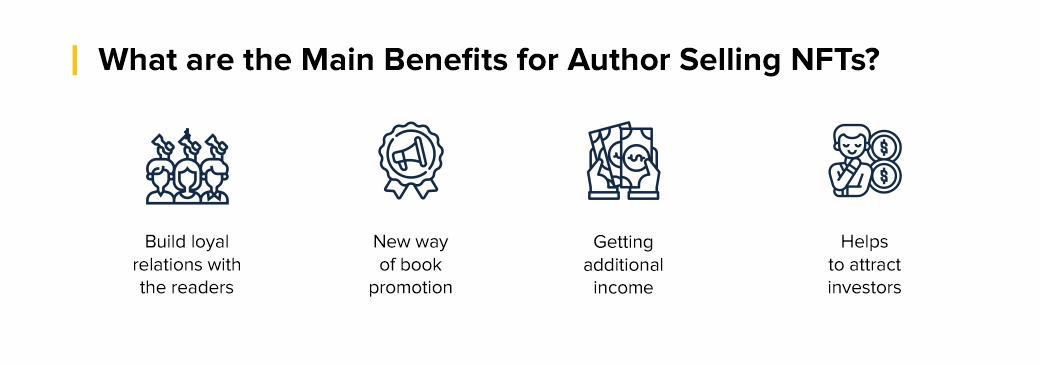
What are the Main Benefits for Author Selling NFTs?
Build loyal relations with the readers. The people who enjoy the book usually want to receive an additional piece of content from the author. Something that is related to the plot of the book, characters, or storyline that the writers created. NFTs allow the author to give the readers what they want.
When a writer releases a paper print or online book, it offers only limiting options to the readers. To fully dive into the world you’ve created, ardent fans will strive for more access to the book. An NFT book and digital collectibles will provide readers with access to the book-related extras, at the same time providing an additional value to everyone who will buy the book.
New way of book promotion. Authors can expand the traditional ways of book promotion. In addition to social media promotion, the author can create various multimedia possibilities. For example, create an online event telling all the details about the NFTs book, read a few chapters or tell the process of book creation. One way or another, NFTs allow authors to focus on the new way how to promote the book.
Getting additional income. In case an author sells an NFT, he can ask for royalties each time the item is resold. The standard amount of royalties are 10% – 15%, but in reality, it could be higher. This can create an additional source of income for the author. It means that every time the book or other digital collectible related to your book gets sold, the writer gets the cut of the percentage.
Helps to attract investors. It won’t be only the readers who will pay attention to the NFTs. The investors also will be interested in promoting and investing in NFTs. For example, some book collectors are ready to buy the 1st edition of the book due to they think that the author has great potential while his works will worth millions in the future.
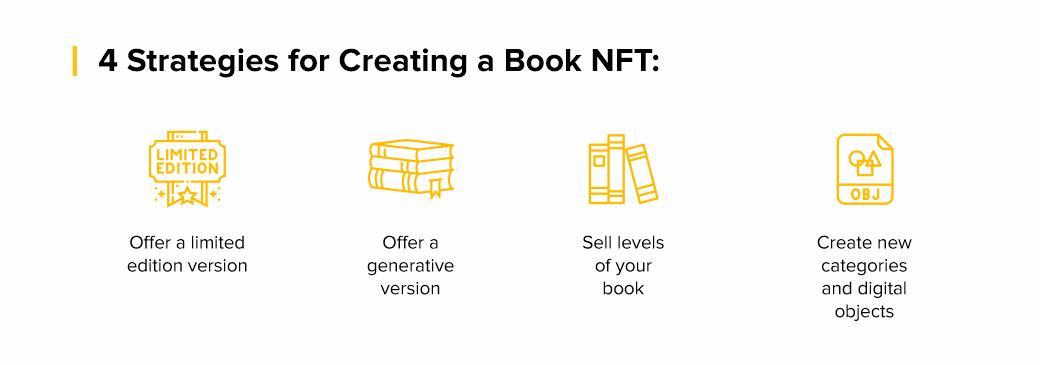
What are the Main Strategies for Creating an NFT Book?
Offer limited editions. When a book is available for a short period of time, it works as an incentive to buy this item. You can set a certain timeframe when anyone can buy a book, after the time ends, collectors will yearn to buy the originals of the book that they have been missed.
Offer different versions of a book. You can introduce to your readers slightly different versions of each copy, meaning that each buyer will get a book that is genuinely unique. Think of the art of text that might supplement each book copy.
Sell alternative versions. Creating an alternative storyline or an ending is a great way to raise the demand for your book. After selling, for example, the first 150 book editions think of the alternative plot twist, so the next 200 editions will be the slightly different front the first ones. The readers who are hooked to your book will love the idea of the extra material.
Create digital items related to your book. Based on the storyline, the author can create digital extras to build a meaningful experince for the readers. So, you can think of digital artworks, audio or video content that could be officially sold and owned all due to NFTs.
Would Readers Care About NFTs Books?
Hell yes!
NFTs have a great effect on the art sector transforming the way people perceive ownership of digital art. Digital books are no different. NFTs books are just as real as physical copies. The new generation of readers understands the meaning of having the first edition of the digital item as clear as traditional book collectors eager to buy the first editions of the physical copies.
Plus, the NFTs in publishing allows to have several major benefits:
The ownership can never be stolen since it is recorded in the blockchain;
The NFTs book is more liquid meaning it is easy to sell;
Easy promotion of the book through social media.
What’s the Future Hold for Book NFTs Industry?
Kevin Kelly in one of his essays said:
“To be a successful creator you don’t need millions. You don’t need millions of dollars or millions of customers, millions of clients or millions of fans. To make a living as a craftsperson, photographer, musician, designer, author, animator, app maker, entrepreneur, or inventor you need only thousands of true fans.”
The author and editor predicted that the economics of creative activities will be transformed by the Internet and online community. Taking that into account, NFTs have the power to revolutionize the publishing sector allowing writers to build a strong community around digital books, propose extra value to the readers and fans, protect their copyright and monetize their digital books.
Currently, when you buy a book from Amazon, you don’t have the right to resell it since you do not own the book. This can be explained by the fact that the secondary ebook markets have the tendency to lower the ebook prices, so the publishers and authors earn less money.
A startup marketplace offering services of buying/selling books on the blockchain will provide a new value to the top online marketplaces, like Amazon, eBay, Etsy, etc. introducing services that the mentioned leaders do not have yet. Such startups will allow authors to self-publish ebooks and transform them into NFTs. So, by selling the ebooks, the writers can have certain royalties from the purchase anytime the NFTs are resold. A person who buys the NFT book will own it and will be able to resell this ebook on OpenSea or Rarible using their ETH wallet.
The writers strive to have new ways of connecting with their audience and protect the authenticity of their digital works. The technology has already arrived so the authors should try to gain maximum benefits from it.
What’s the Cost of Creating NFTs for Books?
To “mint” the NFT for your book will cost money. Usually, the cost depends on the amount of traffic that is running through the network. Meaning that the fee for mining an NFT or simply “gas tax” might be correlated from $10 to $100. Therefore, creating book NFTs at low points will not eventually benefit you as an author. The best tactic is when an author creates one expensive item or a large number of medium-priced items.
Final Words
We believe that NFTs for the book industry will open a new chapter for ebooks. The development of NFTs in art revolutionizes the way we preserve authenticity and ownership of digital items. From ebook monetization to protecting the copyright for writers to providing extra content to readers, NFTs will continue to transform and benefit the publishing industry.
Hopefully, this article answers the common questions about NFTs book. If you have any questions, do not hesitate to fill in the form below, so we can help you in any inquiry.



 As great as WordPress is, certain problems and glitches will inevitably come up. It’s just a part of the experience of being a website owner. And you can either deal with these issues the hard way – manually – or the easy way – via a plugin. There are a host of WordPress plugins that […]
As great as WordPress is, certain problems and glitches will inevitably come up. It’s just a part of the experience of being a website owner. And you can either deal with these issues the hard way – manually – or the easy way – via a plugin. There are a host of WordPress plugins that […]



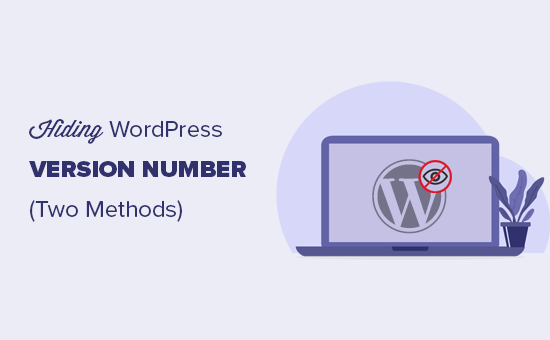
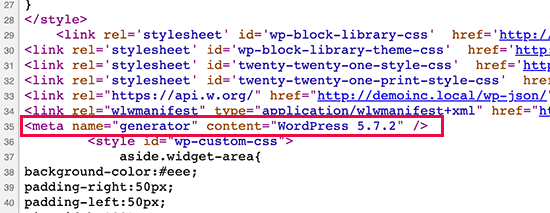
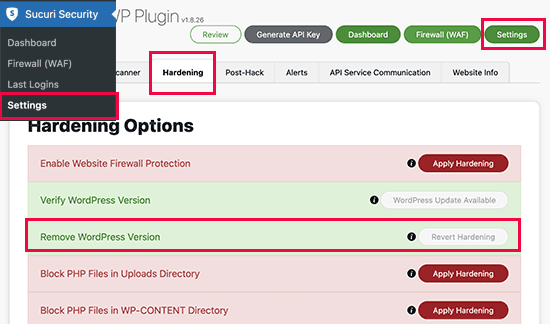




 As a website grows, more content creators are required. With this, there are more iterations of editing in content pieces. This leads to increased complications in collaborative or synchronized working. Now, while there still are efficient tools like Google Docs and grammar checkers for this, publishing the content on websites remains super-taxing. In the coming […]
As a website grows, more content creators are required. With this, there are more iterations of editing in content pieces. This leads to increased complications in collaborative or synchronized working. Now, while there still are efficient tools like Google Docs and grammar checkers for this, publishing the content on websites remains super-taxing. In the coming […]


